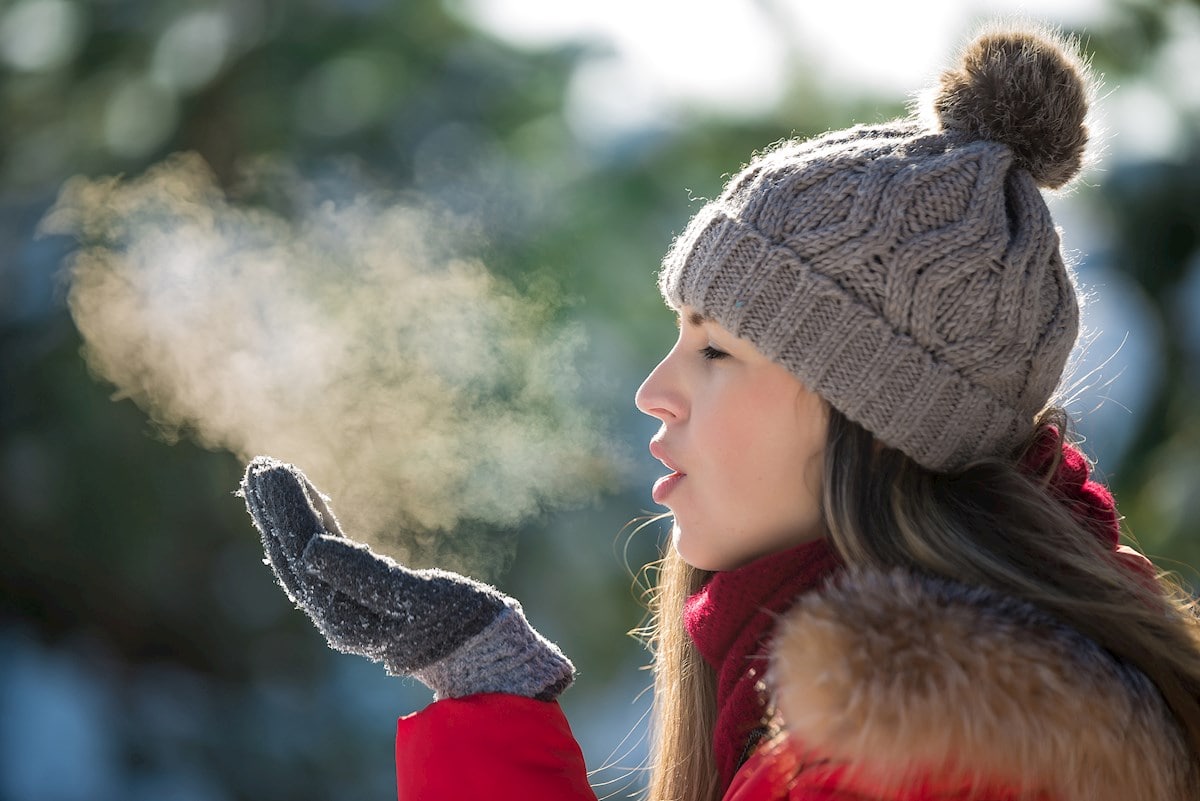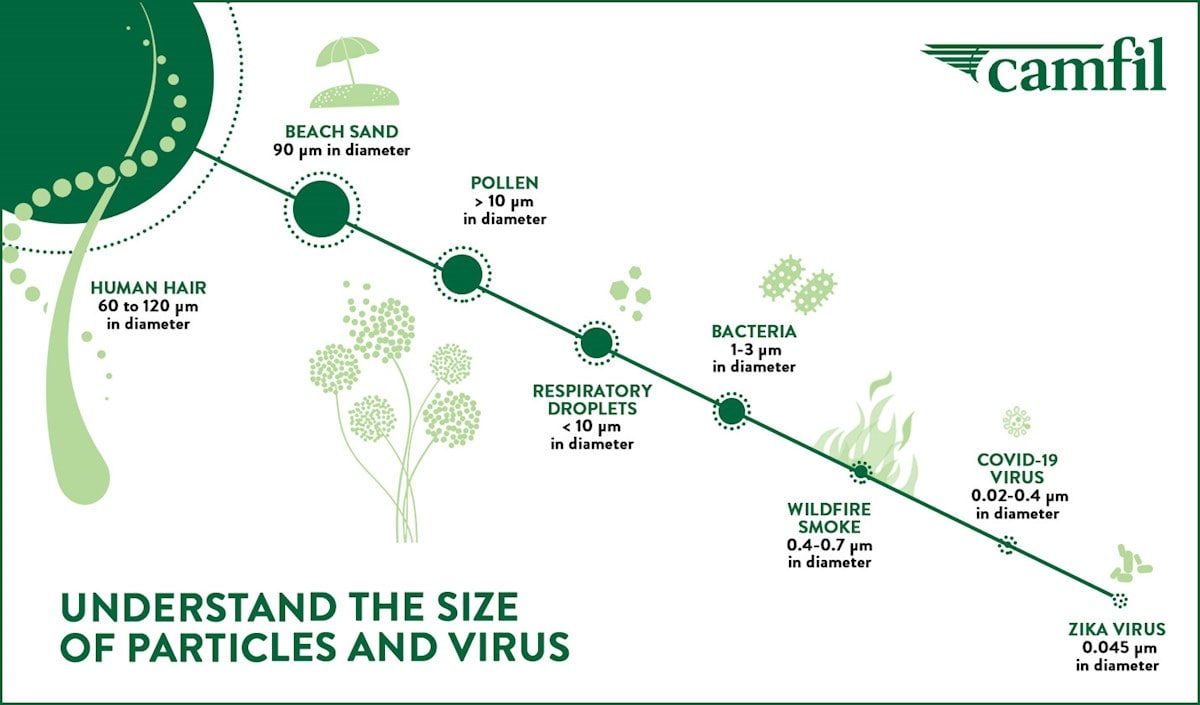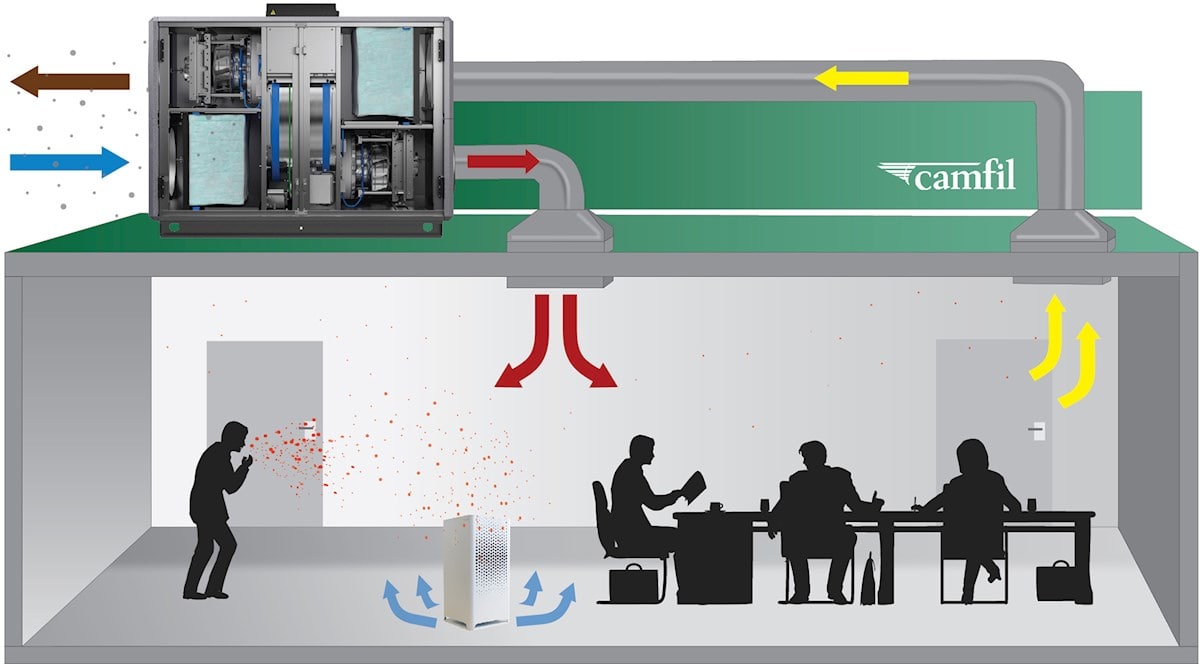
During the winter we experience fresh and clear air thanks to the cold but what most people don’t understand is that the air quality changes. The cold climate contributes not only to dry hands, electric hair, and parched mucous membranes, many people experience cold flu, and other sicknesses during the winter. Why and is there anything we can do to counteract it?
When the temperature outside drops it affects the indoor air and the air becomes dry and arid. This, in turn, affects our body in different ways, but above all, it irritates and dries out our mucous membranes which makes us more susceptible to infections. When we sneeze or cough we secrete droplets that may contain infectious particles. The impact of dry air results in drier droplets that stay longer in the air before they fall on the surface. This increases the risk of inhaling the infectious particles.
Humans constantly secrete particles from the skin and also while talking. According to scientists at Lund University in Sweden, more particles are spread when we sing or scream which can be clearly seen in the video below. In order for bacteria and viruses to be able to infect, infectious substances (particles) releases into the air, transported, and at the same time survive in the environment that finally deposits in a certain amount that enables the spread of infection. Smaller particles that contain fewer viruses can travel longer while larger particles containing significantly more viruses fall faster to the ground or surface.
This video is part of a research study at Lund University in Sweden which investigates aerosol and droplet emissions during singing, as compared to talking and breathing.
Here is the source for more details: https://bit.ly/3bsa9BQ
To get infected the particles must reach the body and this is what is known as airborne infection. Through the inhaled air we have a direct path down to our respiratory system and this results in infections that cause various sicknesses. But it is not only through the air that we inhale the particles, the droplets can survive for a longer time on the surface. The risk of getting infection increases when we touch a surface with active viruses and bacteria, or by ingesting bacteria and viruses from our hands, and other kinds of direct contact.


The combination of the air pollutants from both indoor and outdoor sources in the environment creates a major impact on the indoor air quality. Indoor air quality due to enclosed spaces can be up to 50 times more polluted. Depending on the ventilation solution particles tend to stay in a room and can survive for several hours in that indoor environment if you don’t influence it in any way. External factors are difficult to influence but we can do a lot to improve our indoor environment.
A study recently published by Akademiska Sjukhuset in Sweden shows that proper ventilation is the key to reducing the spread of infection. Inactive coronavirus (non-infectious virus) has been found in the air filters in the ventilation exhaust which shows that the ventilation system is doing the job properly by removing harmful pathogens from the room. If you can increase the number of air changes in the room there are great gains to be made against the spread of infection.
This result shows that it is important to have numerous air changes so that we exhaust or release used air and viruses along with supplying fresh, clean air in the room. To create good indoor air quality, it is also important to review your filters in the facility. We recommend that you use at least filter class ePM1 60%. Also, make sure to change the filter at the correct intervals and undergo regular maintenance. As a complement to the ventilation, you can also install air purifiers which is also the fastest and easiest way to improve the air quality in a room. Camfil’s air purifier City-Series reduces 99.995% of the particles and works in all public environments such as offices, hospitals, hotels, or hairdressers.
Do you want to measure the particle levels in your facility or get help with the best filter solution designed for you? Contact us and our air filtration experts will help you.
Sources